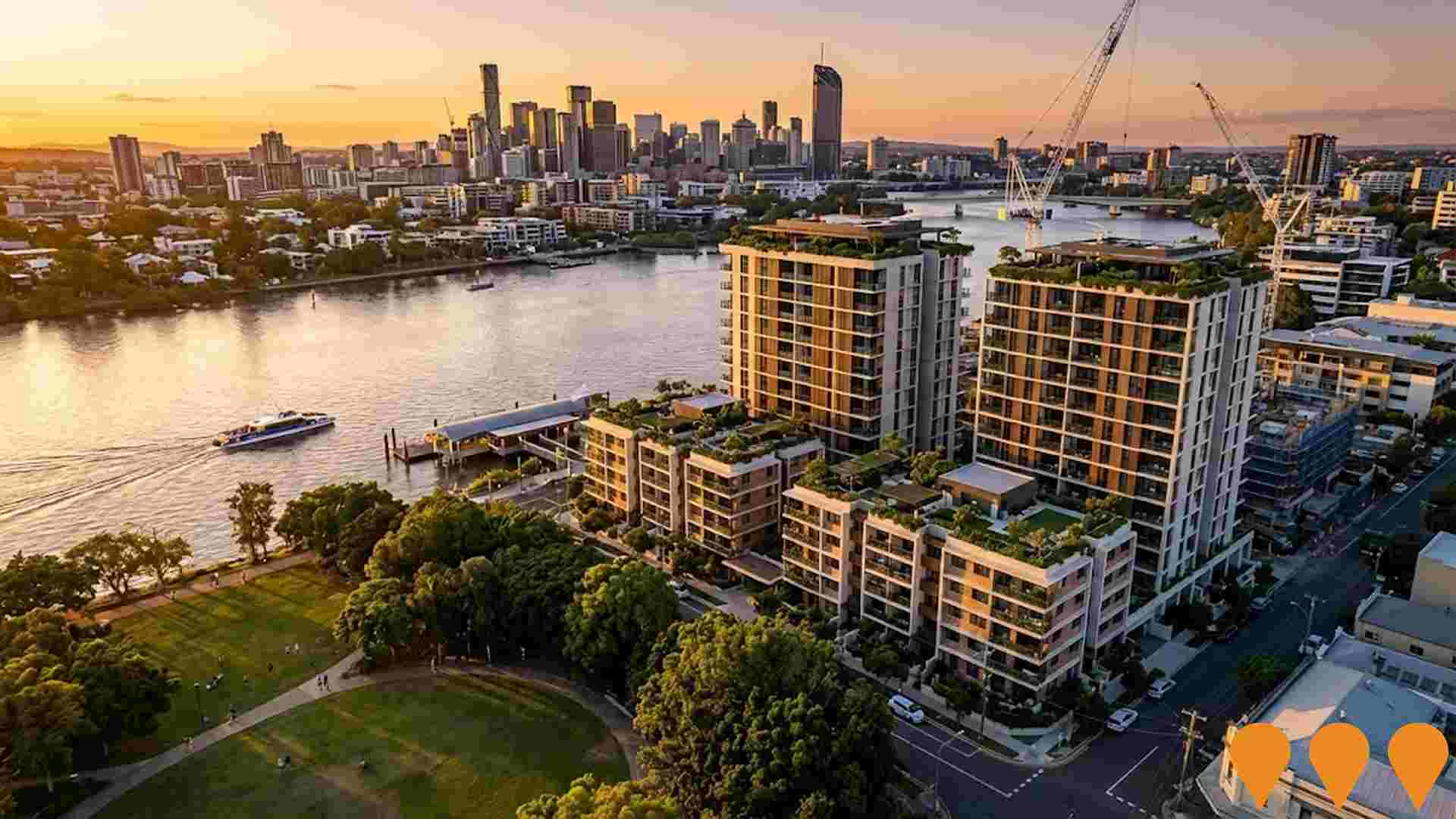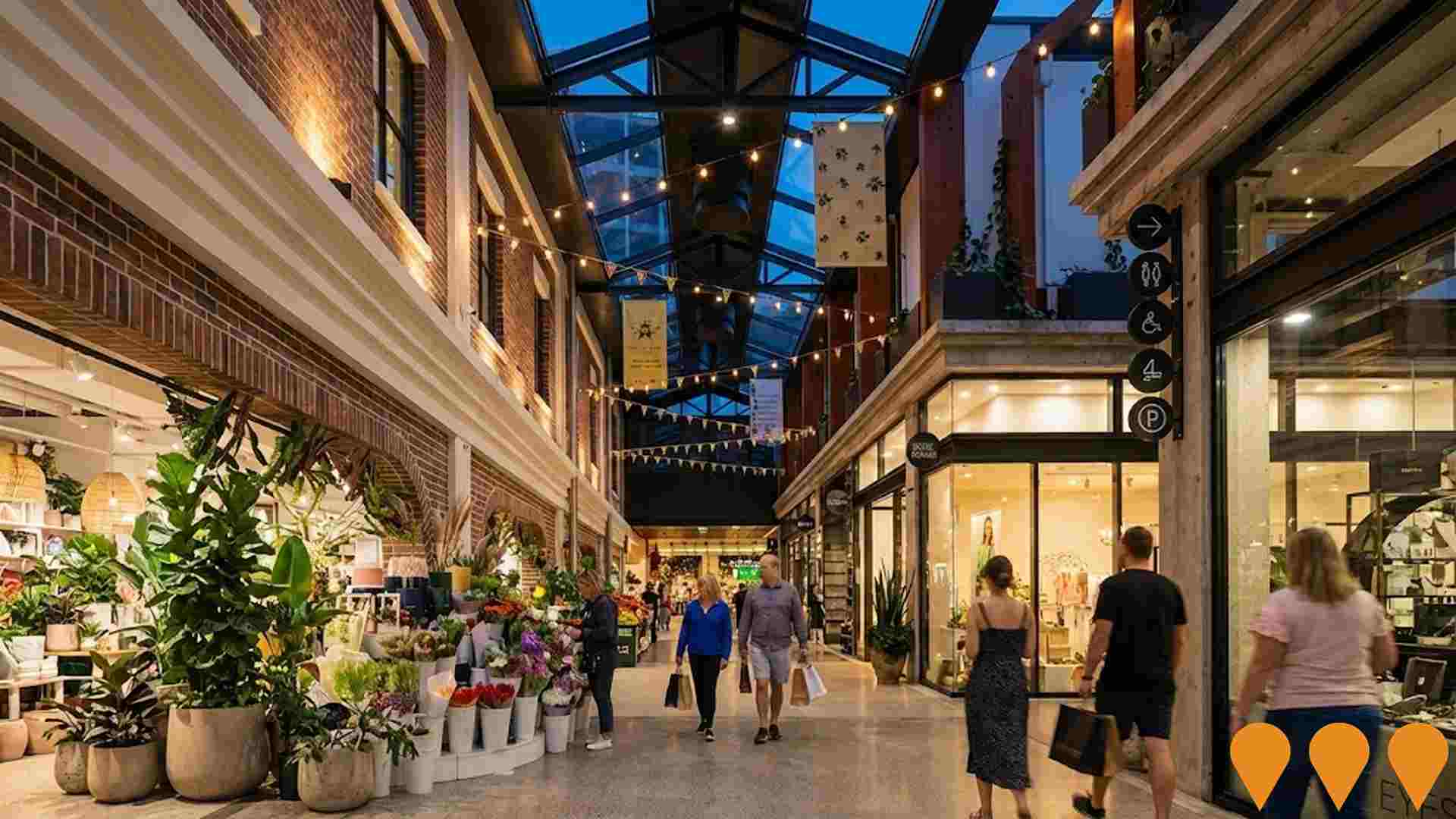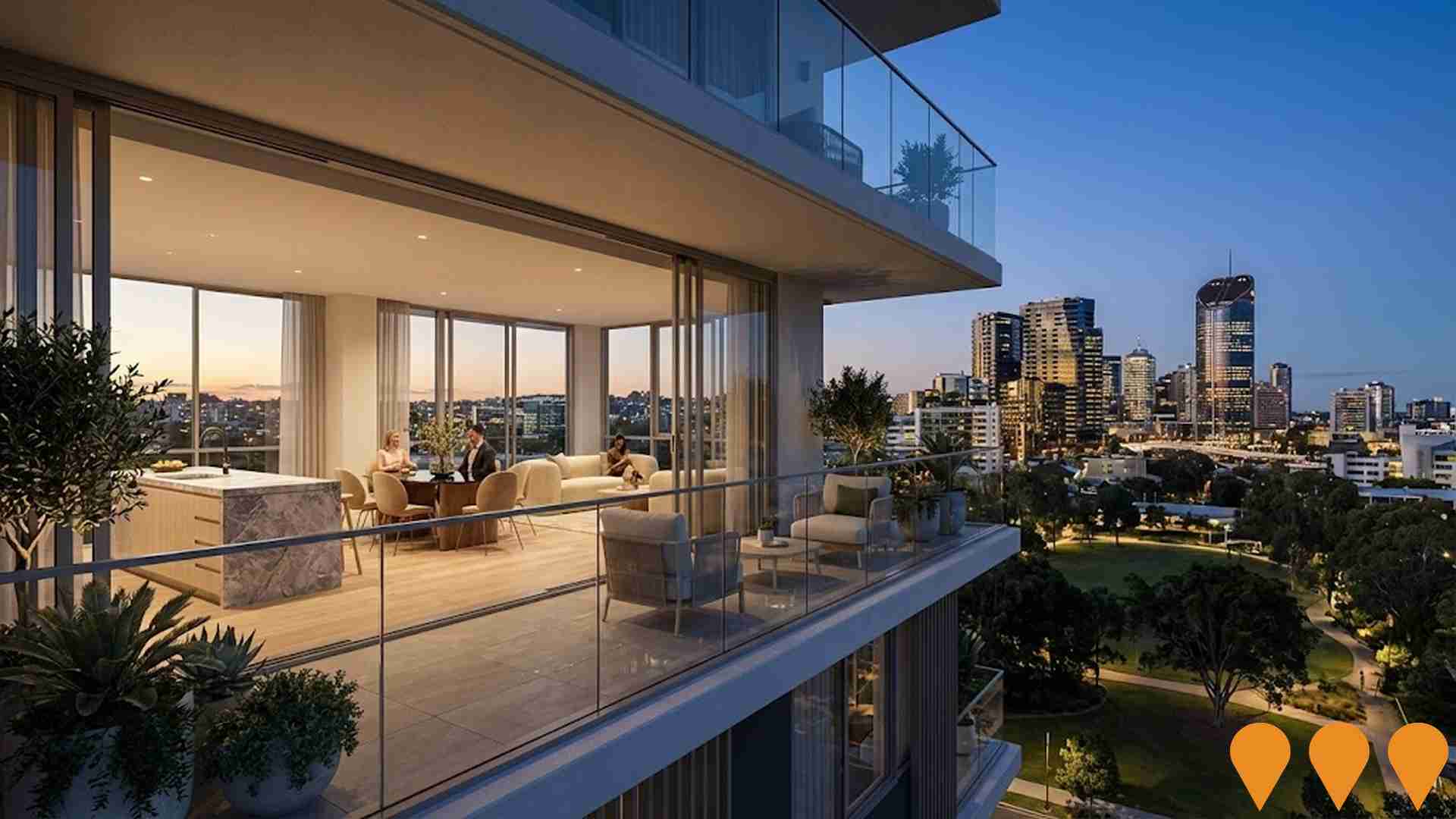Chart Color Schemes
est. as @ -- *
ABS ERP | -- people | --
2021 Census | -- people
Sales Activity
Curious about local property values? Filter the chart to assess the volume and appreciation (including resales) trends and regional comparisons, or scroll to the map below view this information at an individual property level.
Find a Recent Sale
Sales Detail
Population
West End lies within the top 10% of areas nationally in terms of population growth performance according to AreaSearch analysis of short and medium-term trends
West End's population was around 17,642 as of August 2025, according to AreaSearch's analysis. This figure reflects an increase of 2,689 people since the 2021 Census, which reported a population of 14,953. The growth is inferred from the estimated resident population of 17,456 in June 2024 and an additional 739 validated new addresses since the Census date. This results in a population density ratio of 8,955 persons per square kilometer, placing West End in the top 10% of national locations assessed by AreaSearch. West End's growth rate of 18.0% since the 2021 census exceeded both the national average (8.6%) and state averages, marking it as a growth leader in the region. Overseas migration contributed approximately 61.4% of overall population gains during recent periods, although all drivers including interstate migration and natural growth were positive factors.
AreaSearch adopts ABS/Geoscience Australia projections for each SA2 area, released in 2024 with 2022 as the base year. For areas not covered by this data and years post-2032, Queensland State Government's SA2 area projections are adopted, released in 2023 based on 2021 data. However, these state projections do not provide age category splits, so AreaSearch applies proportional growth weightings in line with the ABS Greater Capital Region projections for each age cohort, released in 2023 using 2022 data as the base year. Looking ahead, exceptional population growth is predicted over the period to 2041, with West End expected to expand by 11,730 persons based on the latest population numbers, representing a total increase of 65.4% over the 17 years.
Frequently Asked Questions - Population
Development
The level of residential development activity in West End was found to be higher than 90% of real estate markets across the country
West End has seen approximately 247 dwellings receiving development approval annually. Over the past five financial years, from FY-21 to FY-25, around 1,235 homes were approved, with another 100 approved so far in FY-26. On average, about 3.1 people have moved to the area per dwelling built over these years.
This high demand outpaces new supply, typically leading to price growth and increased buyer competition. The average construction value of new homes is $1,128,000, indicating a focus on premium properties by developers. In terms of commercial development, West End has seen $151.2 million in approvals this financial year, suggesting strong local business investment. Compared to Greater Brisbane, West End's building activity per person is comparable, supporting market stability aligned with regional patterns. However, recent periods have shown a moderation in development activity. Recent construction in West End comprises 1% detached houses and 99% attached dwellings, marking a significant shift from the current housing pattern of 20% houses.
This focus on higher-density living creates more affordable entry points for downsizers, investors, and first-home buyers. The location has approximately 126 people per dwelling approval, indicating an expanding market. Looking ahead to 2041, West End is expected to grow by 11,544 residents. If current construction levels persist, housing supply may lag population growth, potentially intensifying buyer competition and underpinning price growth.
Frequently Asked Questions - Development
Infrastructure
West End has moderate levels of nearby infrastructure activity, ranking in the top 50% nationally
Changes to local infrastructure significantly influence an area's performance. AreaSearch has identified 56 projects likely impacting the area. Notable ones are The Allere Collection, West Village, Callista on Park - West Village Final Stage, The Adler, and West Village. Relevant projects are detailed below.
Professional plan users can use the search below to filter and access additional projects.
INFRASTRUCTURE SEARCH
 Denotes AI-based impression for illustrative purposes only, not to be taken as definitive under any circumstances. Please follow links and conduct other investigations from the project's source for actual imagery. Developers and project owners wishing us to use original imagery please Contact Us and we will do so.
Denotes AI-based impression for illustrative purposes only, not to be taken as definitive under any circumstances. Please follow links and conduct other investigations from the project's source for actual imagery. Developers and project owners wishing us to use original imagery please Contact Us and we will do so.
Frequently Asked Questions - Infrastructure
The Wesley Hospital Expansion (Chasely Street Health Hub)
Major campus expansion known as The Wesley Expansion / Chasely Street Health Hub, featuring a new 10-storey health precinct with comprehensive cancer centre (including radiation oncology bunkers), day surgery centre, radiology, medical imaging, specialist suites, allied health and pharmacy services. Includes a second 10-storey accommodation tower replacing the outdated Wesley Rotary Lodge for regional patients and families. Connected to the existing hospital via a pedestrian bridge, plus approximately 200 additional car parks. Ministerial Infrastructure Designation (MID) approved July 2025. Builds on earlier operating theatre upgrades (completed 2015).
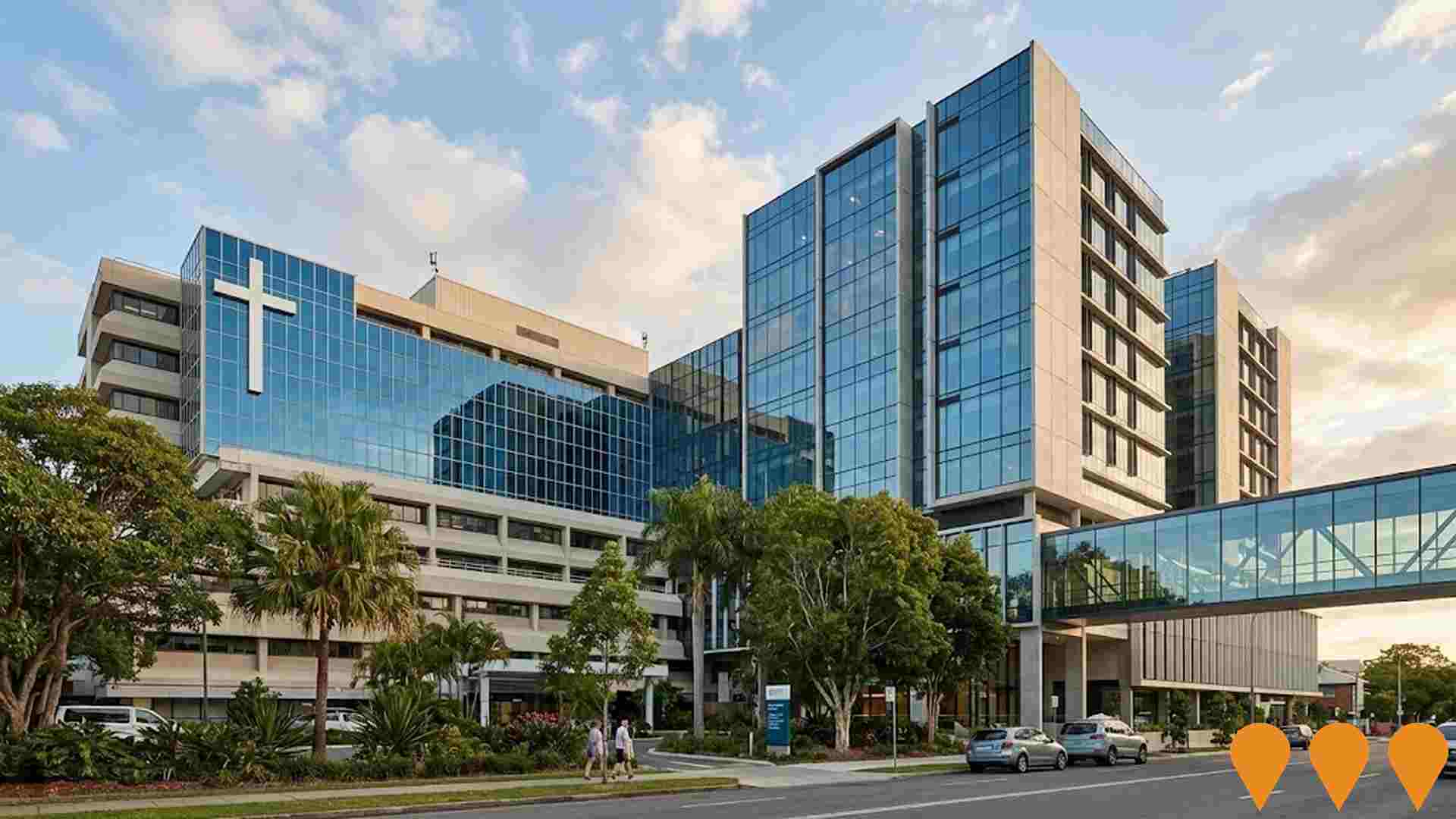
Toowong Central
A major $1 billion mixed-use precinct set to transform the heart of Toowong. The proposal features three residential towers rising to 49, 55, and 58 storeys, delivering approximately 1,104 apartments. The development includes over 12,000sqm of retail and dining space, commercial offices, and 4,500sqm of landscaped public open space with plazas and laneways. The project is currently under assessment, with a public notification period expected to continue into 2026.

West Village
Award-winning $1.2 billion heritage-listed urban village on 2.6 hectares in West End, Brisbane. Features 1,253 completed apartments across eight buildings, full restoration of the heritage Peters Ice Cream factory, 18,500sqm of retail and commercial space (now fully tenanted), laneway dining precinct, Woolworths supermarket, and over 6,500sqm of public open space. Achieved 6-Star Green Star Communities rating and over 50 industry awards.
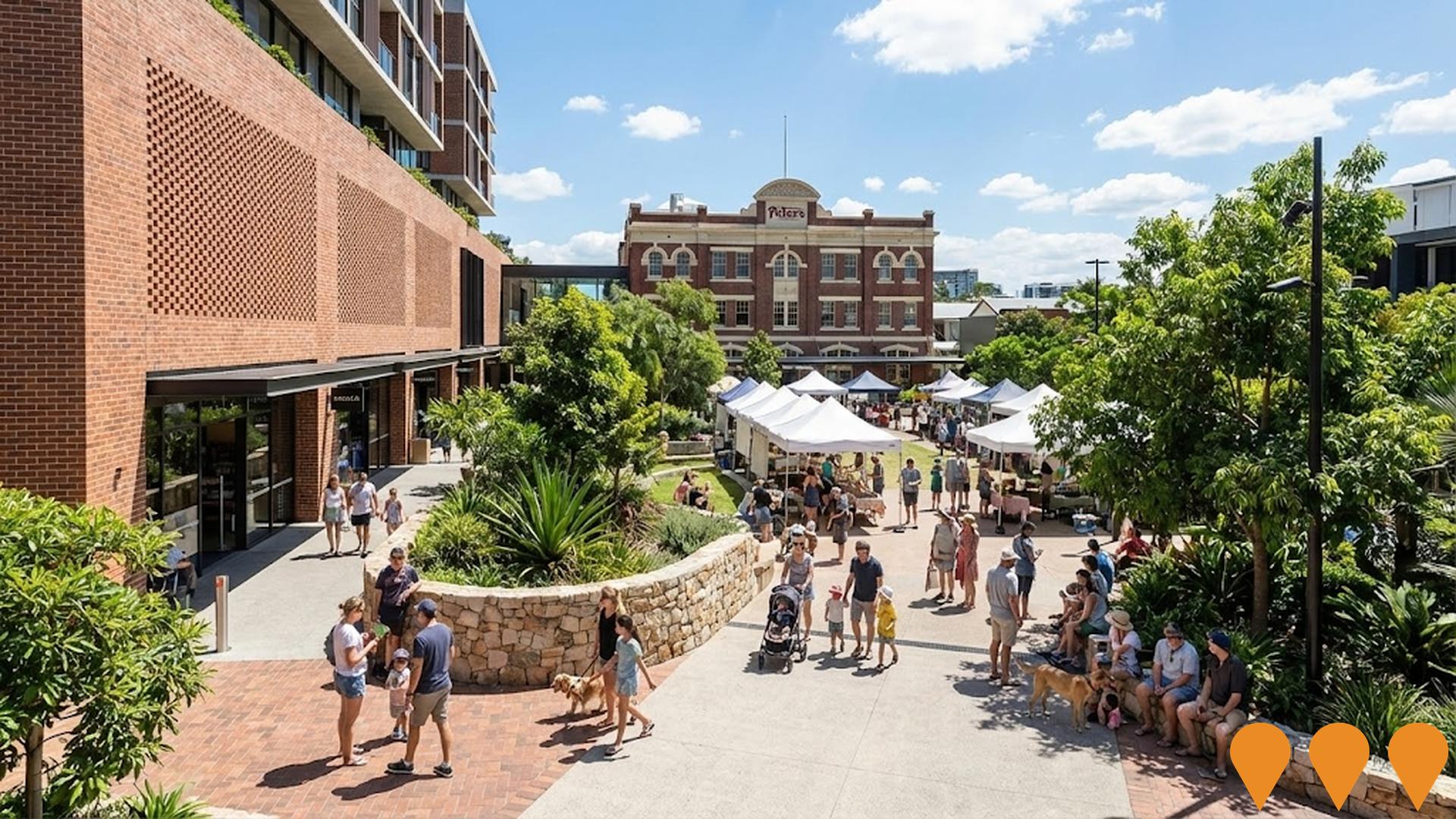
One Earle Lane by Azure
A luxury residential development of 90 apartments across 8 levels on a 2,697 sqm parkside block by Azure Development Group. Designed by world-renowned architect Paul Conrad, features contemporary design with premium amenities including a 25m heated pool, gym, cinema, private dining, yoga studio, sauna, steam room, and hot/cold plunge pools. Located adjacent to Toowong Memorial Park with completion in Q1 2025. Over 90% sold with penthouse record sale of $4.1 million. The development offers two and three-bedroom residences with modern design and quality finishes in a convenient Toowong location with excellent transport connections.
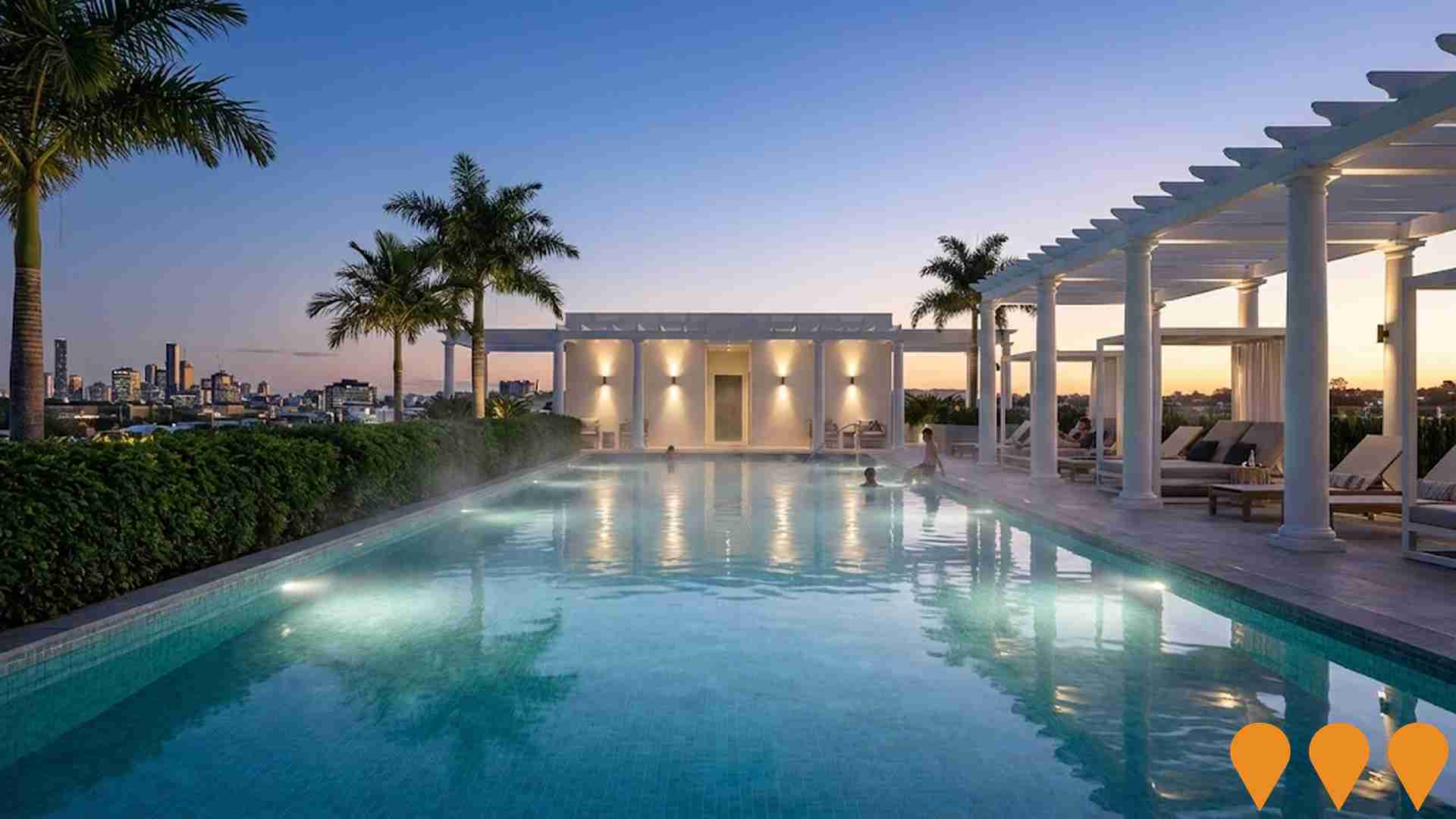
The Adler
A 12-storey mixed-use development featuring 36 residential apartments (2-4 bedrooms) and commercial spaces. Rising 12 storeys, this architectural masterpiece combines contemporary luxury with thoughtful design, delivering an exceptional lifestyle framed by uninterrupted views of Brisbane's city skyline, river, and hinterland. Developed by Lantona with Brisbane Builders.

53-59 High Street Mixed-Use Development
Development site acquired for $6.4M by Toowong Central Investment Holding Pty Ltd from Chehade Investments. 1,027sqm site with 35m High Street frontage purchased through Knight Frank's Christian Sandstrom. Strategic development potential in heart of Toowong adjacent to major transport and retail hubs with approval for up to 5 storeys. Sale rate of $6,232 per sqm on land area.

The Lanes West End
The Lanes West End is the final chapter of Pradella's $1.3 billion Riverside West End masterplanned precinct. Comprises three residential buildings (Stage 1: Wave Residences - completed/move-in ready as of late 2025; Stage 2: Cascade Residences - under construction, anticipated completion late 2026; planned Stage 3). Features 1, 2 and 3-bedroom apartments, Skyhomes and penthouses, almost 4,500sqm of resort-style amenities (including rooftop retreat with pool, wellness centre, sky bridge), new community park and private dog park.

St Lucia to West End Green Bridge
The St Lucia to West End Green Bridge was a proposed pedestrian and cycling bridge, with potential for public transport, connecting Keith Street, St Lucia to Boundary Street, West End. The project was cancelled in 2023 due to community feedback, technical challenges, and cost concerns.

Employment
AreaSearch assessment positions West End ahead of most Australian regions for employment performance
West End has an educated workforce with strong representation in professional services. The unemployment rate is 3.8%, lower than Greater Brisbane's 4.1%.
Employment growth over the past year was estimated at 3.8%. As of June 2025, 11,701 residents are employed, with a participation rate of 72.5% compared to Greater Brisbane's 64.5%. Leading industries include professional & technical, health care & social assistance, and education & training. The area specializes in professional & technical jobs, with an employment share twice the regional level.
However, construction is under-represented at 4.6%, compared to Greater Brisbane's 9.0%. Many residents commute elsewhere for work. Between June 2024 and June 2025, employment levels increased by 3.8% while unemployment fell by 0.9 percentage points. Jobs and Skills Australia forecasts national employment growth of 6.6% over five years and 13.7% over ten years. Applying these projections to West End's employment mix suggests local growth of approximately 7.2% over five years and 14.6% over ten years.
Frequently Asked Questions - Employment
Income
Income metrics indicate excellent economic conditions, with the area achieving higher performance than 75% of national locations assessed by AreaSearch
West End's median taxpayer income was $59,436 and average income was $85,806 according to AreaSearch's postcode level ATO data for the financial year 2022. This is notably higher than Greater Brisbane's median income of $55,645 and average income of $70,520. Based on a 13.99% growth in wages since FY2022, estimated incomes as of September 2025 would be approximately $67,751 (median) and $97,810 (average). Census data shows West End's household, family, and personal incomes rank between the 73rd and 87th percentiles nationally. In West End, 34.8% of individuals earn between $1,500 - 2,999 weekly, similar to the broader regional trend of 33.3%. Notably, 30.8% earn above $3,000 weekly. High housing costs consume 17.8% of income, but strong earnings place disposable income at the 69th percentile. The area's SEIFA income ranking places it in the 9th decile.
Frequently Asked Questions - Income
Housing
West End features a more urban dwelling mix with significant apartment living, with above-average rates of outright home ownership
The dwelling structure in West End, as per the latest Census, consisted of 19.5% houses and 80.5% other dwellings (semi-detached, apartments, 'other' dwellings). In comparison, Brisbane metro had 12.9% houses and 87.2% other dwellings. Home ownership in West End was at 18.3%, with the remaining dwellings either mortgaged (21.9%) or rented (59.8%). The median monthly mortgage repayment in the area was $2,100, while the median weekly rent was $450. In Brisbane metro, these figures were $2,000 and $440 respectively. Nationally, West End's mortgage repayments were higher at $1,863, and rents were substantially above the national figure of $375.
Frequently Asked Questions - Housing
Household Composition
West End features high concentrations of group households and lone person households, with a higher-than-average median household size
Family households constitute 56.2% of all households, including 19.4% couples with children, 28.0% couples without children, and 7.3% single parent families. Non-family households comprise the remaining 43.8%, with lone person households at 33.9% and group households comprising 9.9%. The median household size is 2.1 people, larger than the Greater Brisbane average of 1.9.
Frequently Asked Questions - Households
Local Schools & Education
Educational achievement in West End places it within the top 10% nationally, reflecting strong academic performance and high qualification levels across the community
West End's educational attainment is notably higher than broader benchmarks. Among residents aged 15+, 57.1% hold university qualifications, compared to 25.7% in Queensland (QLD) and 30.4% nationally. Bachelor degrees are the most common at 34.5%, followed by postgraduate qualifications (18.1%) and graduate diplomas (4.5%). Vocational pathways account for 19.6% of qualifications, with advanced diplomas at 9.5% and certificates at 10.1%.
Educational participation is high, with 33.0% of residents currently enrolled in formal education. This includes 14.2% in tertiary education, 6.6% in primary education, and 6.3% pursuing secondary education. West End State School and Arethusa College - West End Temporary Facility serve a total of 1,474 students. The area's ICSEA score is 1142, indicating significant socio-educational advantages and academic achievement. Educational provision follows conventional lines, with one primary and one secondary institution. However, local school capacity is limited at 8.4 places per 100 residents compared to the regional average of 18.1, leading many families to travel for schooling. Note: for schools showing 'n/a' in enrolments, please refer to their parent campus.
Frequently Asked Questions - Education
Schools Detail
Nearby Services & Amenities
Transport
Transport servicing is high compared to other areas nationally based on assessment of service frequency, route connectivity and accessibility
Transport analysis shows 63 active stops operating in West End, offering a mix of ferry and bus services. These stops are served by 8 routes, collectively facilitating 4,930 weekly passenger trips. Transport accessibility is rated excellent, with residents typically located 119 meters from the nearest stop.
Service frequency averages 704 trips per day across all routes, equating to approximately 78 weekly trips per individual stop.
Frequently Asked Questions - Transport
Transport Stops Detail
Health
West End's residents boast exceedingly positive health performance metrics with very low prevalence of common health conditions across all age groups
West End shows excellent health outcomes, with very low prevalence of common health conditions across all age groups. Private health cover is exceptionally high at approximately 63% of the total population (11,167 people), compared to the national average of 55.3%.
Mental health issues and asthma are the most common medical conditions in the area, affecting 9.8% and 7.0% of residents respectively. A total of 75.4% of residents report being completely clear of medical ailments, similar to the Greater Brisbane average of 75.5%. West End has 11.2% of residents aged 65 and over (1,968 people), with seniors' health outcomes aligning closely with those of the general population.
Frequently Asked Questions - Health
Cultural Diversity
West End is among the most culturally diverse areas in the country based on AreaSearch assessment of a range of language and cultural background related metrics
West End has high cultural diversity, with 30.5% speaking a language other than English at home and 40.6% born overseas. Christianity is the dominant religion, comprising 31.9%. Judaism is overrepresented at 0.3%, compared to 0.2% in Greater Brisbane.
The top ancestry groups are English (21.9%), Australian (15.9%), and Other (12.1%). Notably, Spanish (1.1%), French (1.0%), and Vietnamese (2.0%) are overrepresented compared to regional averages of 1.0%, 0.9%, and 1.2% respectively.
Frequently Asked Questions - Diversity
Age
West End's young demographic places it in the bottom 15% of areas nationwide
West End has a median age of 34, which is slightly lower than Greater Brisbane's figure of 36 and substantially under Australia's median age of 38. Compared to Greater Brisbane, West End has a higher proportion of residents aged 25-34 (23.6%) but fewer residents aged 5-14 (8.8%). This concentration of 25-34 year-olds is significantly higher than the national average of 14.5%. Between the 2021 Census and the present, the proportion of West End's population aged 35-44 has increased from 16.4% to 17.5%, while the 75-84 age group has grown from 2.4% to 3.5%. Conversely, the proportion of residents aged 25-34 has decreased from 25.3% to 23.6%, and the 15-24 age group has dropped from 14.5% to 13.3%. Population forecasts for West End indicate significant demographic changes by 2041, with the 45-54 age cohort projected to grow strongly at 89%, adding 2,051 residents to reach a total of 4,347.
